How to Make Traditional Japanese Miso Soup (Easy & Simple)
I’ll teach you how to make miso soup at home, using a simple fast method that anyone can do. I’ll also explain why miso is more than...
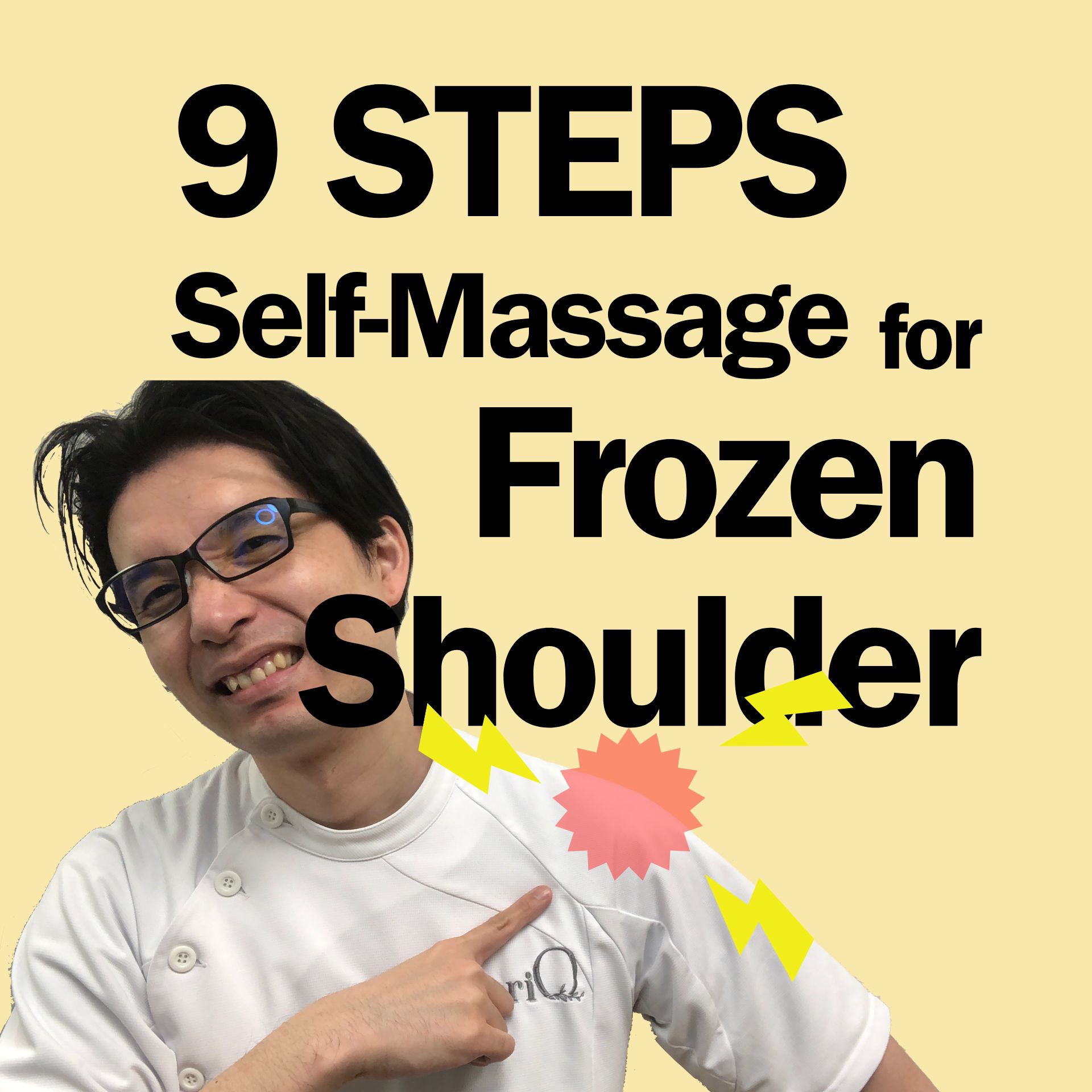
August 10, 2024
Hi, it’s Satoru from hariQ acupuncture & herbs. I want to share excellent techniques you can do at home to ease pain or even increase the range of motion from your frozen shoulder. A frozen shoulder is a condition where the shoulder joint becomes stiff and painful to move. The symptoms usually develop gradually and can worsen over time. It is caused by the thickening and tightening of the shoulder joint capsule, which can significantly limit the range of motion and cause pain when you move your shoulder, like picking up a cup over the shelf, combing your hair, or reaching out to your bra huck.
The massage technique that I use is called trigger point massage, which targets specific points in the muscle. These trigger points can be felt as small lumps, typically no larger than a pea. When pressed, a trigger point can feel like it’s tender or sore. In addition, a taut band may be present in the muscle, which feels like a cord or small cable and extends from the trigger point to its attachments. This tight band can limit your range of motion and cause stiffness in your shoulder, ultimately leading to a frozen shoulder.
So, I created an easy 9 steps you can do at home to improve your range of motion and reduce the pain, and hopefully, you can use your shoulder more freely.
We understand this can be a lot of information and overwhelming: if you are looking for more support and answers, set up a free consultation with our Frozen Shoulder Specialist, Satoru Ozawa. Share your story, get your questions answered, and learn how you can set yourself up for tremendous success in achieving a healthy life.
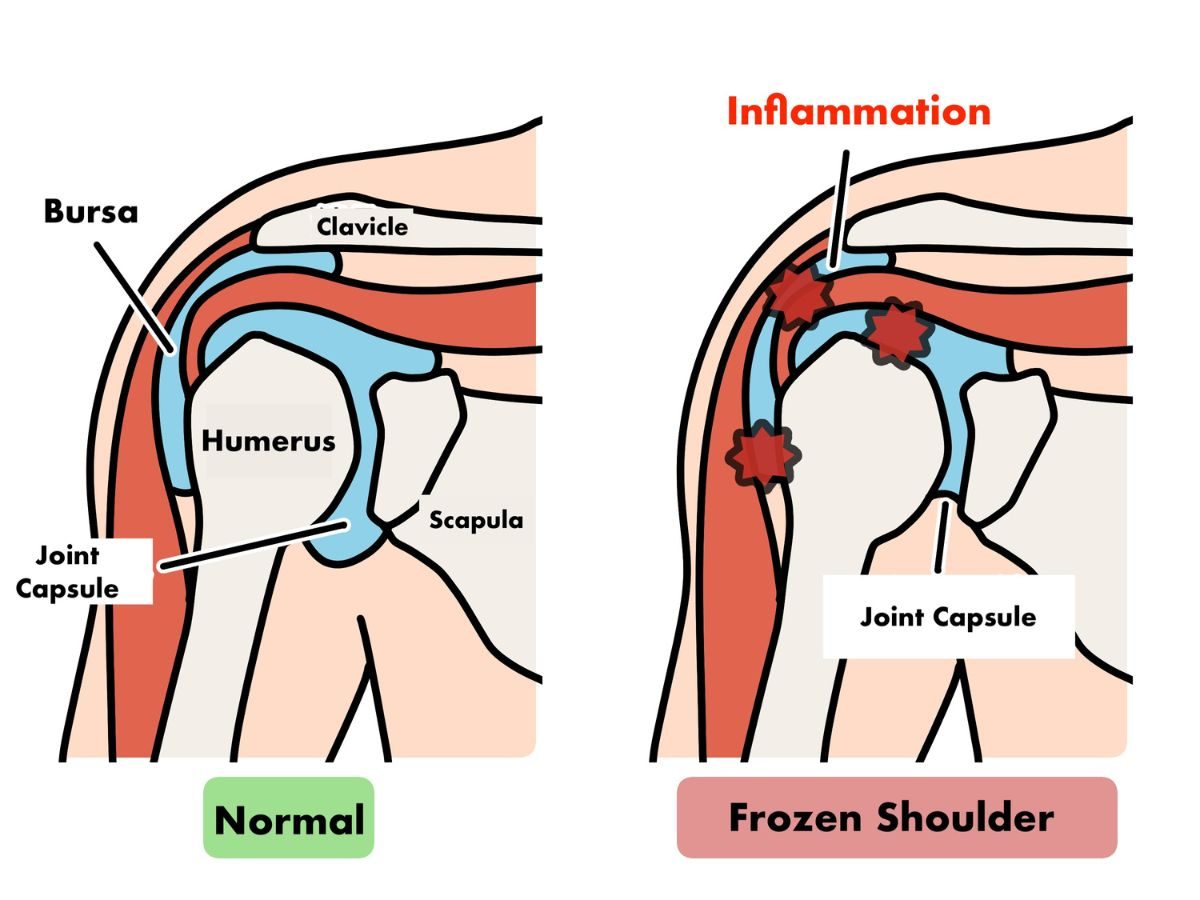
Frozen shoulder, also known as glenohumeral capsulitis, occurs when the synovial fluid inside the shoulder capsule thickens, causing a loss of flexibility in the shoulder joint. Synovial fluid is a liquid that is present in every joint and tendon, and it helps to reduce friction and inflammation when you move your joints.
There are several risk factors that can increase the likelihood of developing frozen shoulder. Some of these factors include a history of shoulder injury or surgery, diabetes, thyroid disorders, heart disease, Parkinson’s disease, and stroke. Additionally, people who are over the age of 40 and women are more likely to develop frozen shoulder.
When you face a frozen shoulder, there are three stages: freezing, frozen, and thawing.
This is the initial stage where you start to feel pain and stiffness in your shoulder. The pain gradually increases over time, and you may find it difficult to move your shoulder. This stage usually lasts for 6-9 months.
In this stage, the pain starts to subside, but the stiffness remains. You may find it difficult to carry out everyday activities like combing your hair or reaching behind your back. This stage usually lasts for 4-6 months.
In this stage, the stiffness gradually reduces, and you start to regain your range of motion. This stage can last from 6 months to 2 years.
There are 9 steps of massages and stretching you can do to release the tension of the specific muscles and loosen up the joint capsules to increase the range of motion.
There are four small but essential muscles around your shoulder, called rotator cuff. These muscles mainly help in moving your shoulder outwards as external rotators. According to theories, these muscles have an agonist-antagonist relationship. If the rotator cuff muscles are weak or tight, there can be an imbalance in the internal and external rotators of your shoulder, leading to a curved shoulder and a decrease in shoulder range of motion. For instance, when you lift your shoulder, once it passes the 90-degree angle, the humerus bone externally rotates to widen the joint, allowing you to lift higher. However, if you have tightness in your rotator cuff, the humerus bone can become stuck, resulting in limited mobility.
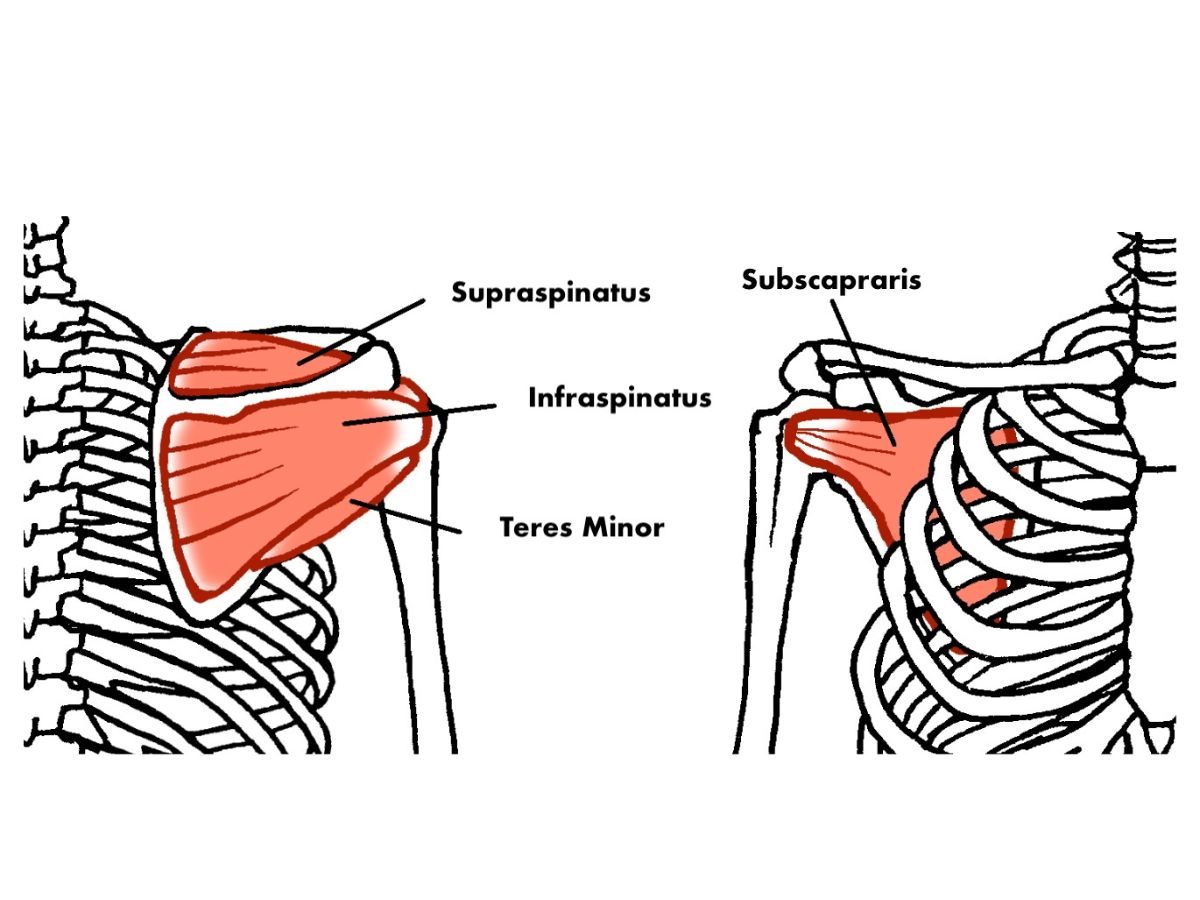
This can eventually cause a frozen shoulder because the joint capsule tends to tighten up easily with less movement. For example, after having a cast for your broken fingers or arm for a month, you might have felt stiff and limited joint movement after the cast was removed. This occurs because of the tightness of the joint capsule due to a lack of movement.
The same thing will happen when your shoulder goes inward too much or for a long time. To prevent or manage that, you need to massage and release the rotator cuffs.
There are 3 spots on the back of your shoulder.
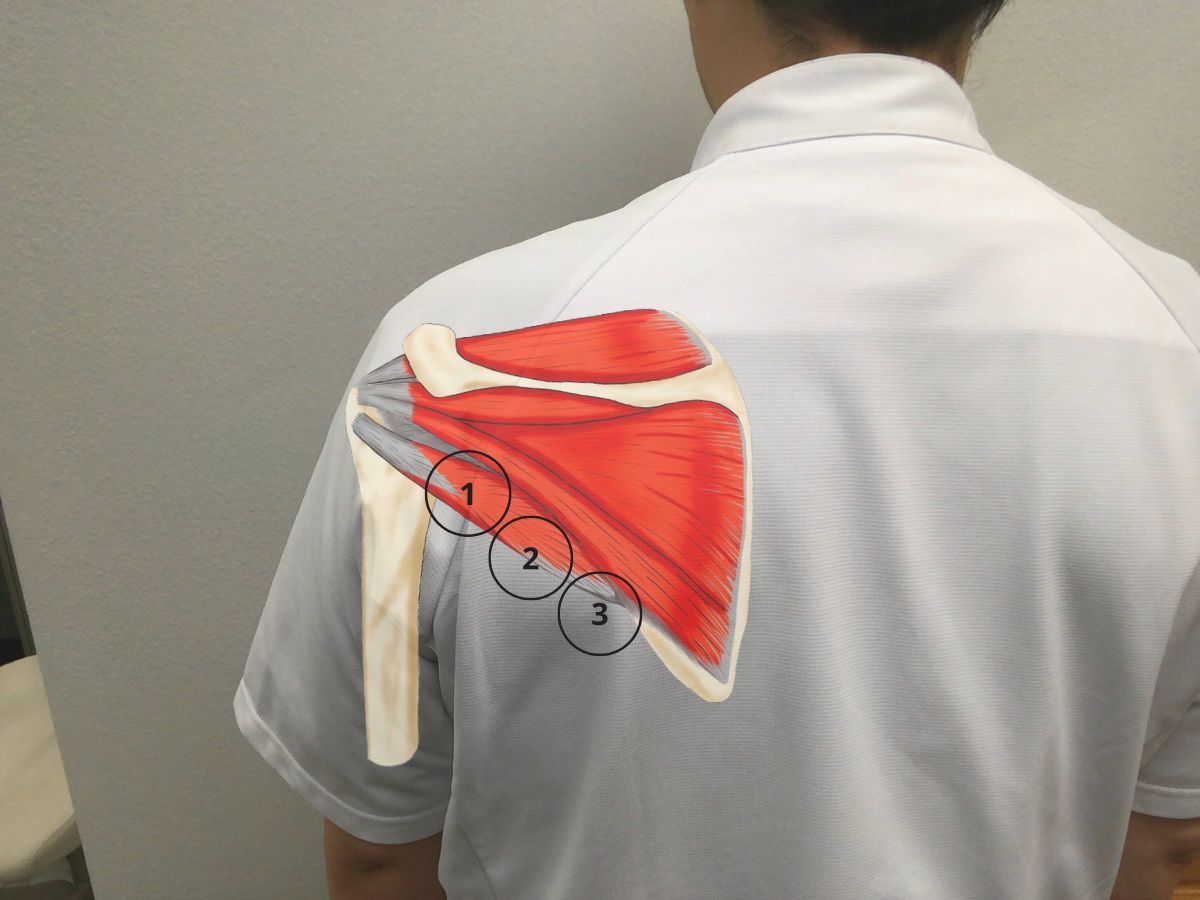
To locate the first spot, you can use your hand to reach the shoulder. Place your thumb and index finger web on your armpit and extend your arm. The first spot is located at the tip of your middle finger. Use three fingers to point towards the outside of your shoulder and massage in circular motions for 10 seconds.
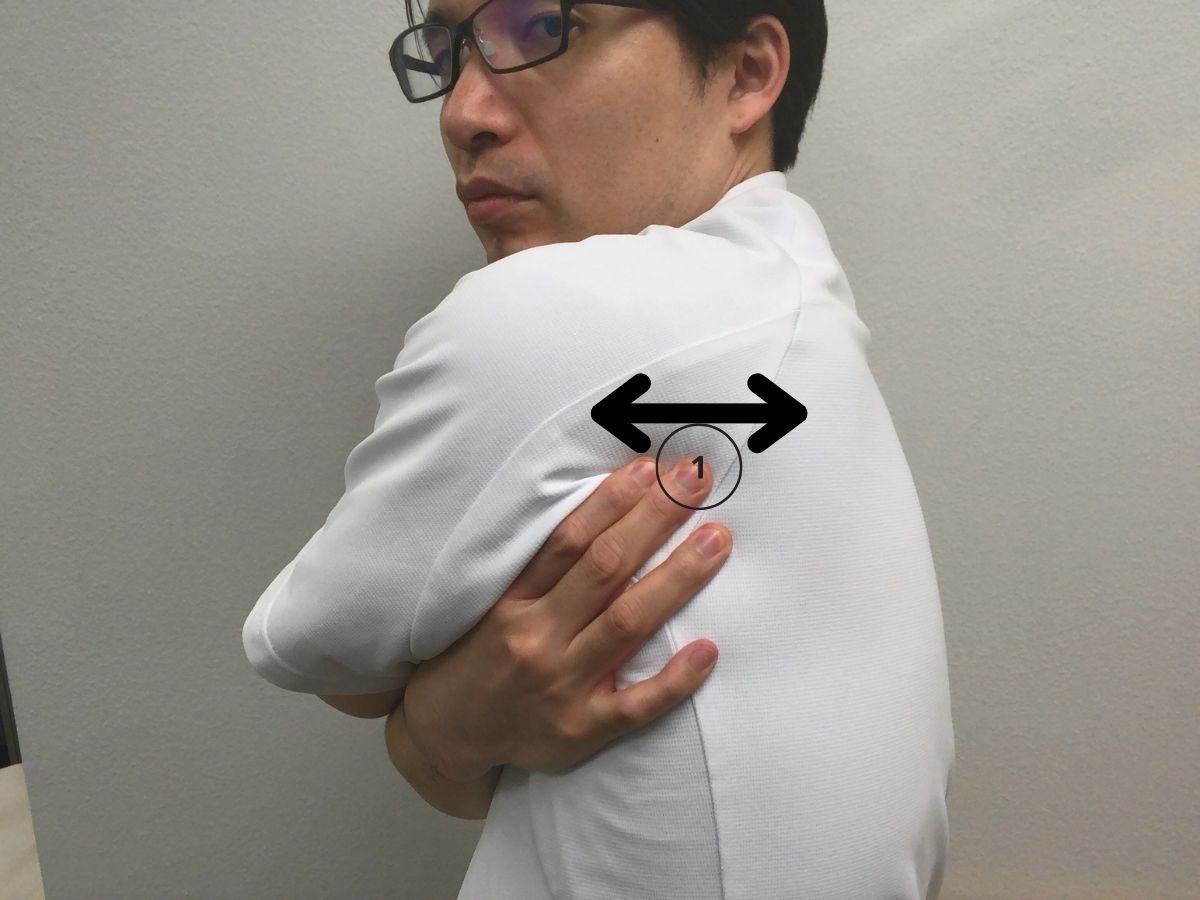
The second spot is just below the first spot. Find the tender spot or taut band and rub the circular motion for 10 seconds.
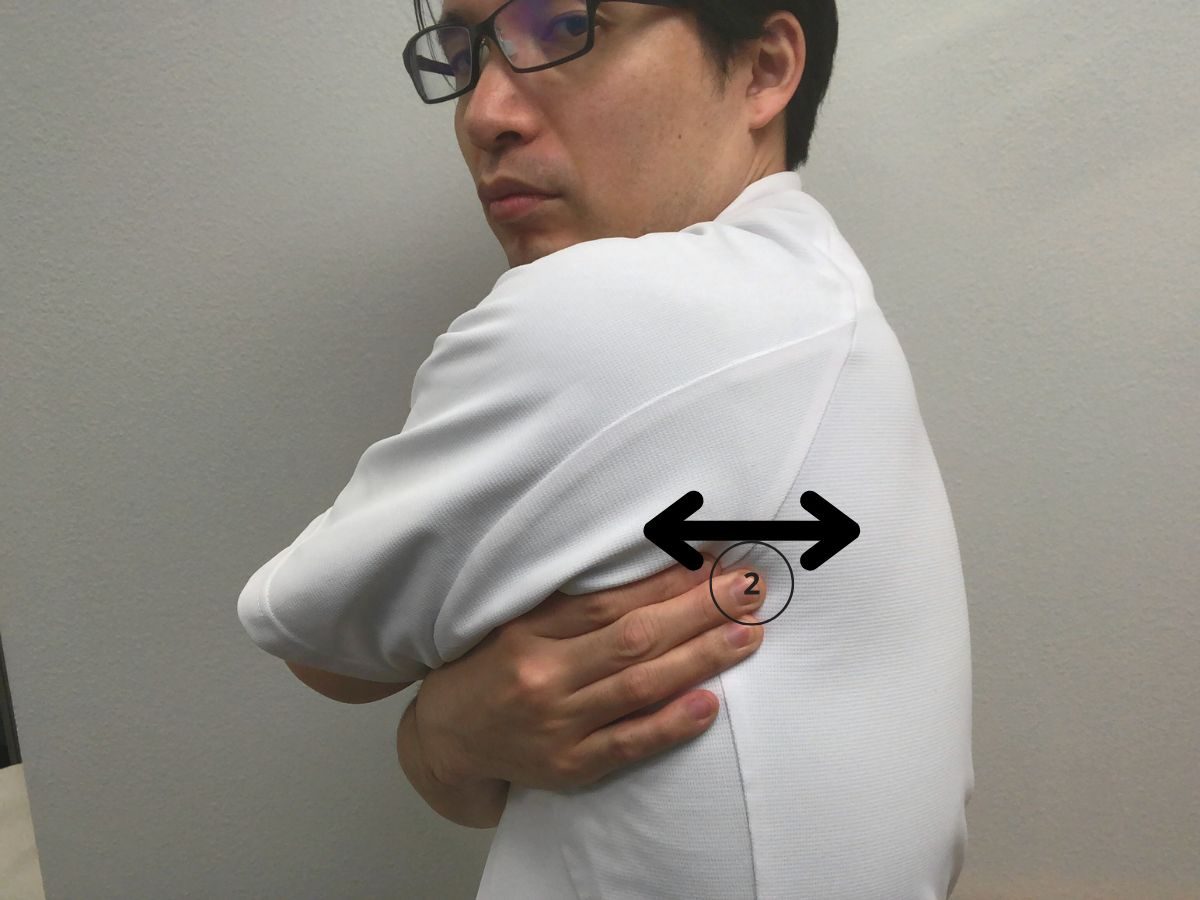
The third spot is below the second spot. You should feel the edge of the wing bone, also called the scapula. Rub the circular motion for 10 seconds.

Repeat the entire cycle 2 more times.
This area can be quite sensitive for people who suffer from frozen shoulders. The massage technique I’ll be using is specifically designed for the Serratus anterior muscle, which is connected to your ribs and wing bone. When you lift your shoulder, it’s not just your shoulder joint that moves but also your wing bone, also known as the scapula. Once your shoulder is lifted beyond 30 degrees, your wingbone starts to move outwards. However, if you experience a frozen shoulder, you might lose this movement due to the tightening of your serratus anterior muscle.
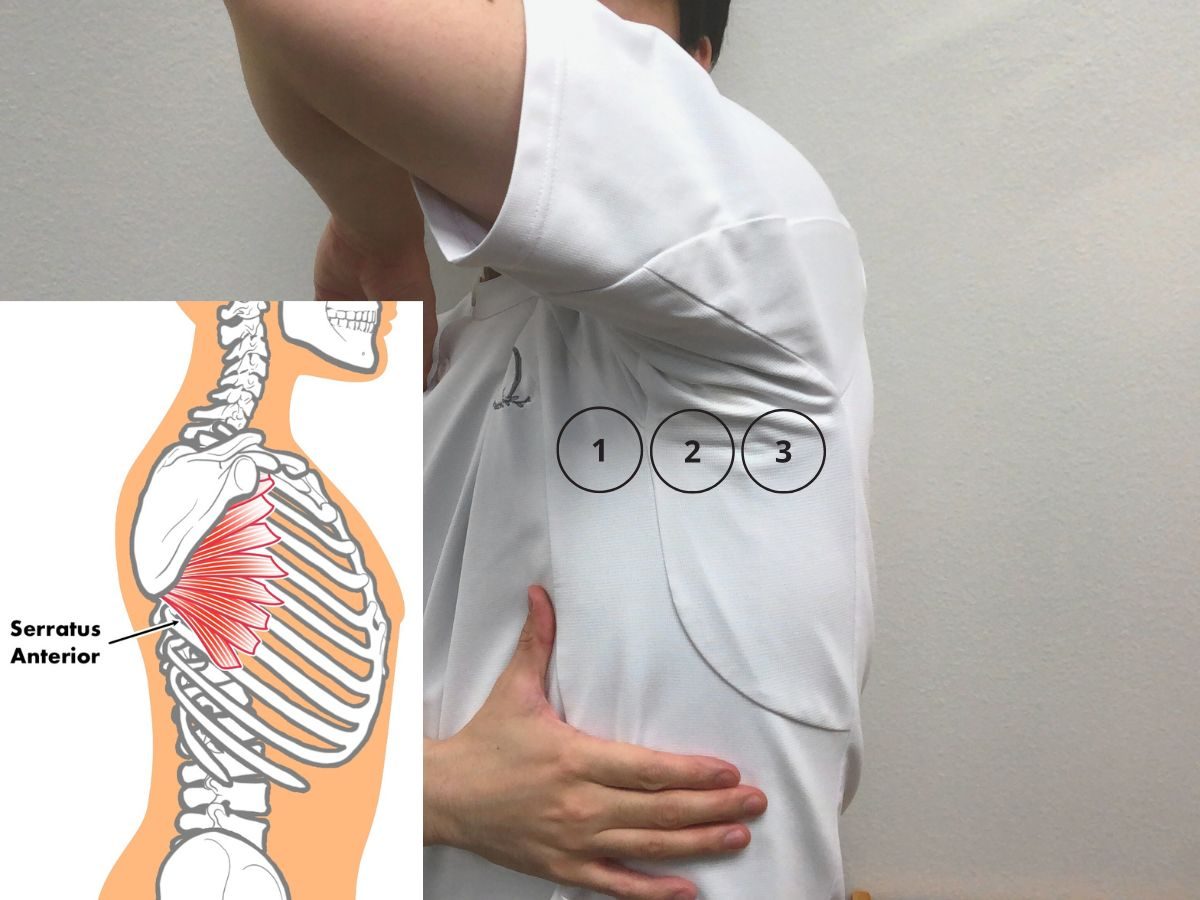
Massage the area below your armpit using 2-3 fingers. Find the 2-3 tender spots and massage sideways for 10 seconds before moving to the next spot.

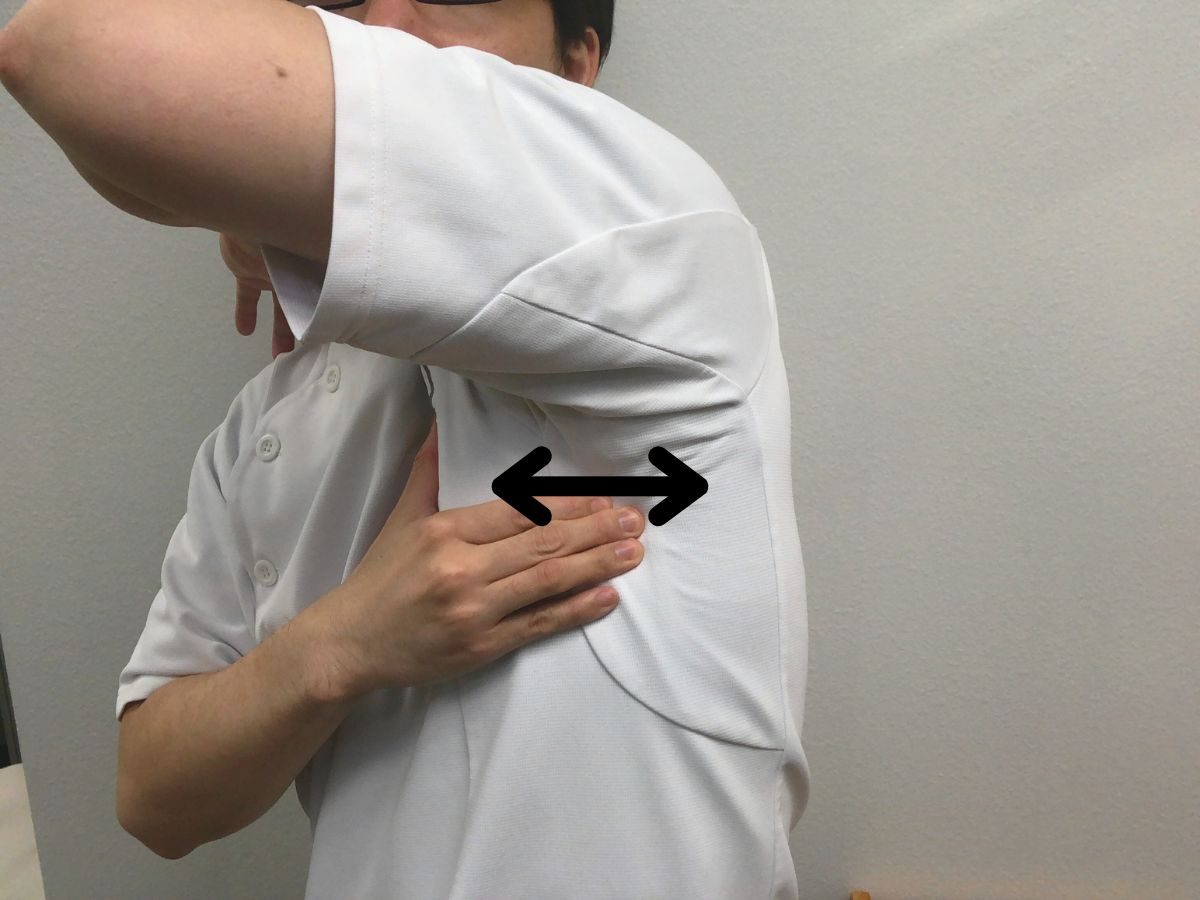
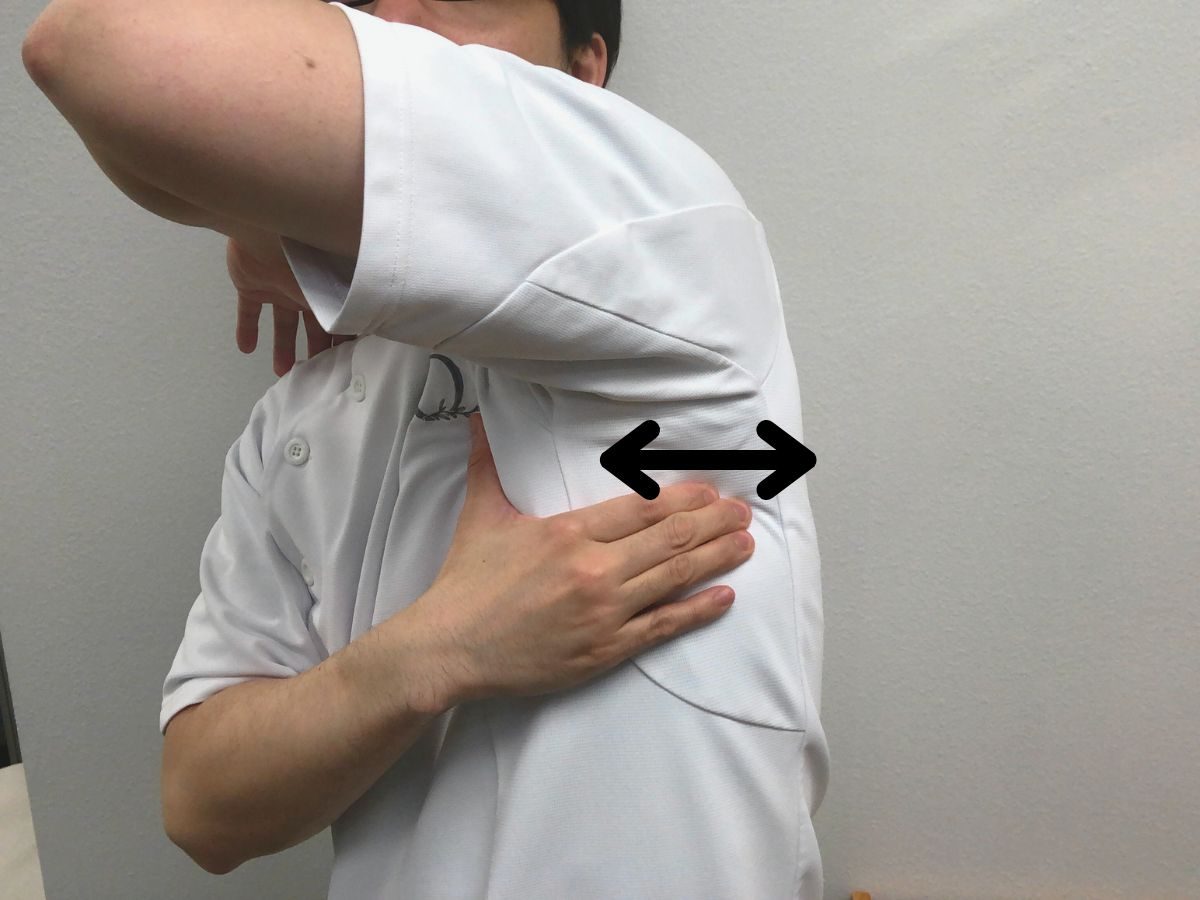
Repeat this cycle two more times.
A stiff neck can also aggravate the movement of your shoulder, and in this step, I want you to focus on 2 muscles. Trapezius and scalenes. The trapezius is the huge muscle attached to the back of your head, and you need to release it before you feel release your shoulder. The next muscle is the scalenes. These muscles often affect your neck bundle nerves, which is called the brachial plexus. People who have frontal shoulder pain really need to release these muscles because these nerves control them.
To give neck massage, use three fingers to start just below your earlobe. Divide the area into three spots and work your way down until you reach just above your collarbone. Use a circular motion and apply a little bit of pressure for 10 seconds. Be careful not to apply too much pressure and cause pain. Gentle massaging is enough to feel good. Move down towards your collarbone and repeat this cycle two more times.
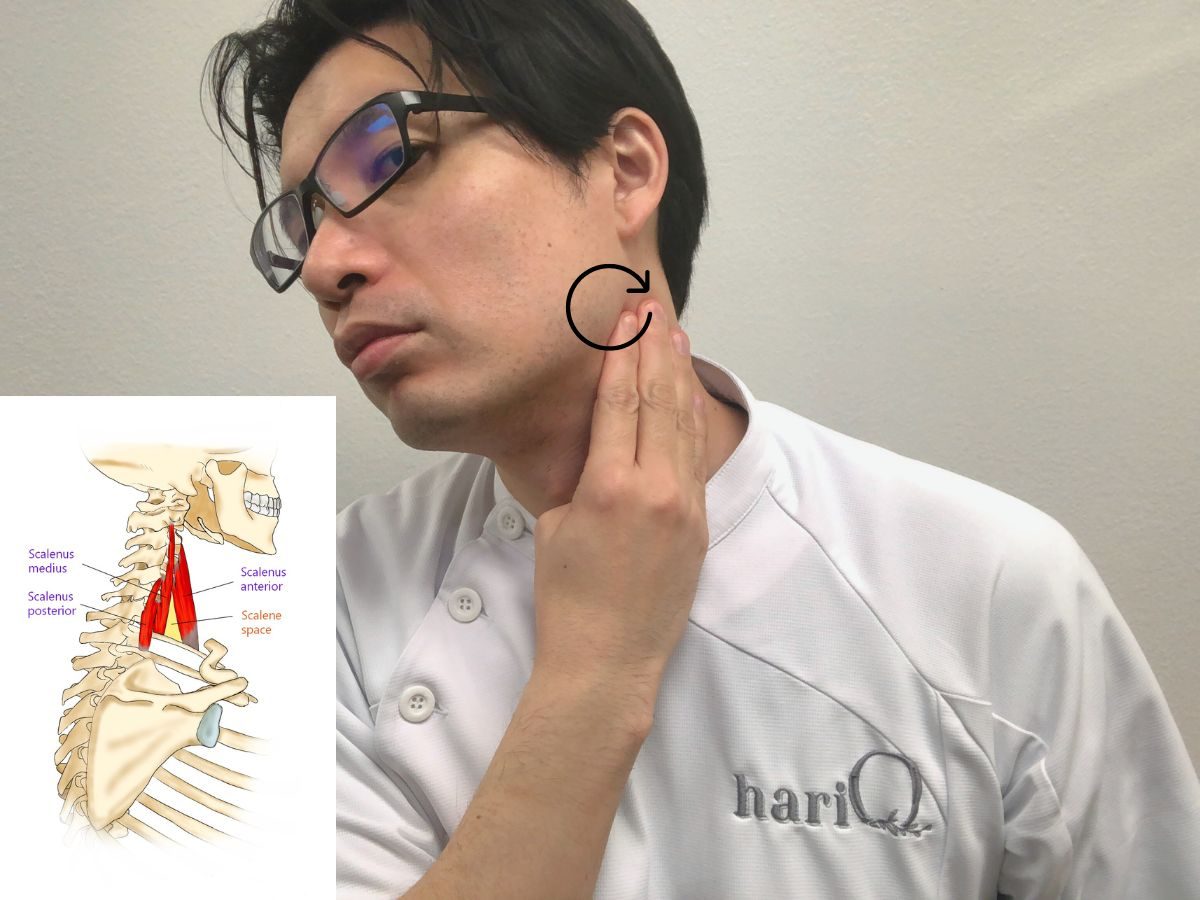

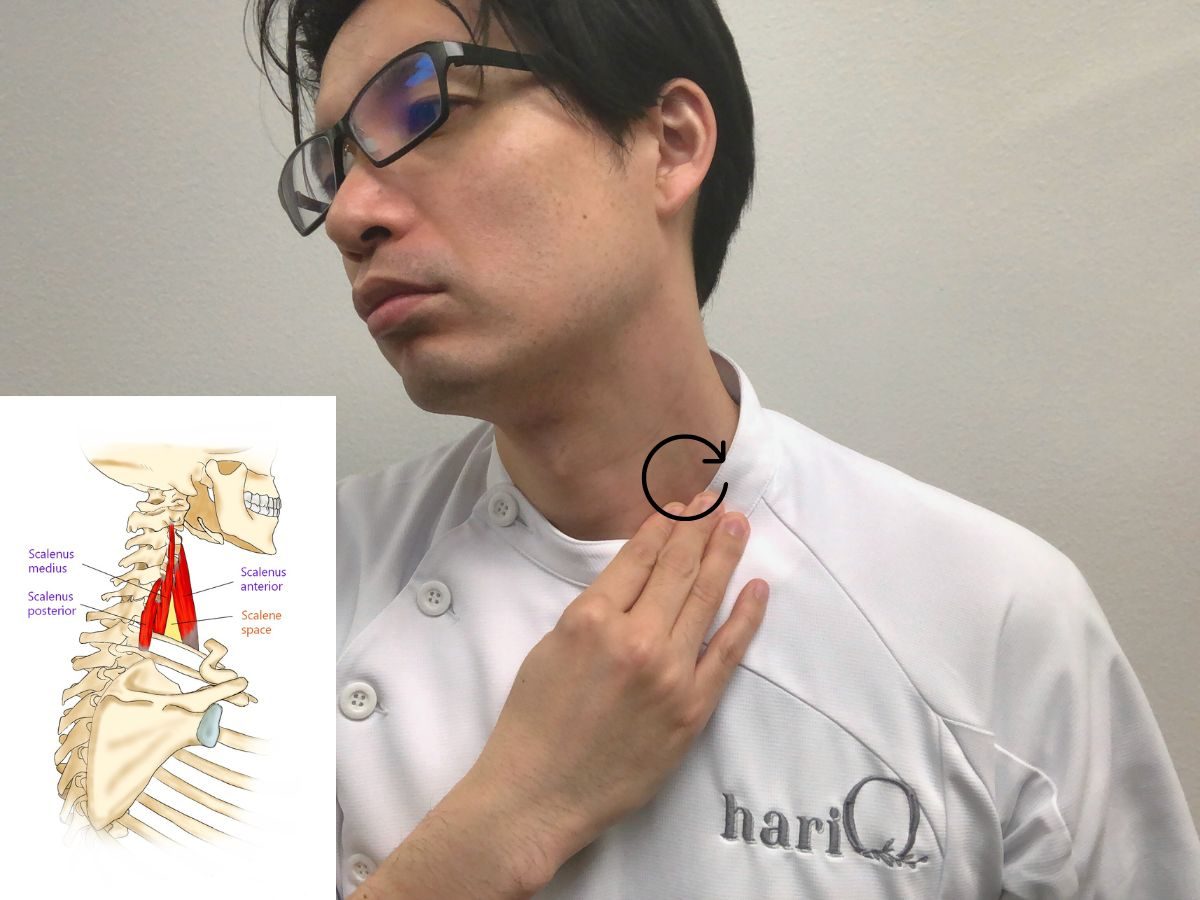
The next spot is located just below the collarbone. If you experience tenderness when touched here, it may be due to tightness in your pec major muscle or subclavius muscle. These muscles can cause pressure on the nerves and vessels in the area. To alleviate this, please rub sideways along the collarbone for 10 seconds, and repeat this process two more times.

The next is located on the shoulder. To locate it, touch the inside of your shoulder where there is a depression. Inside the depression, you’ll find a bone called the coracoid process. This is where the coracoid brachialis and pec minor muscles attach. When these muscles become tight, your shoulder may roll inward, causing a frozen shoulder. To loosen up this point, use your fingers and place them just inside the knot. Rub in a circular motion for 10 seconds. You might feel sore at this point, but that’s normal. Repeat this process two more times.
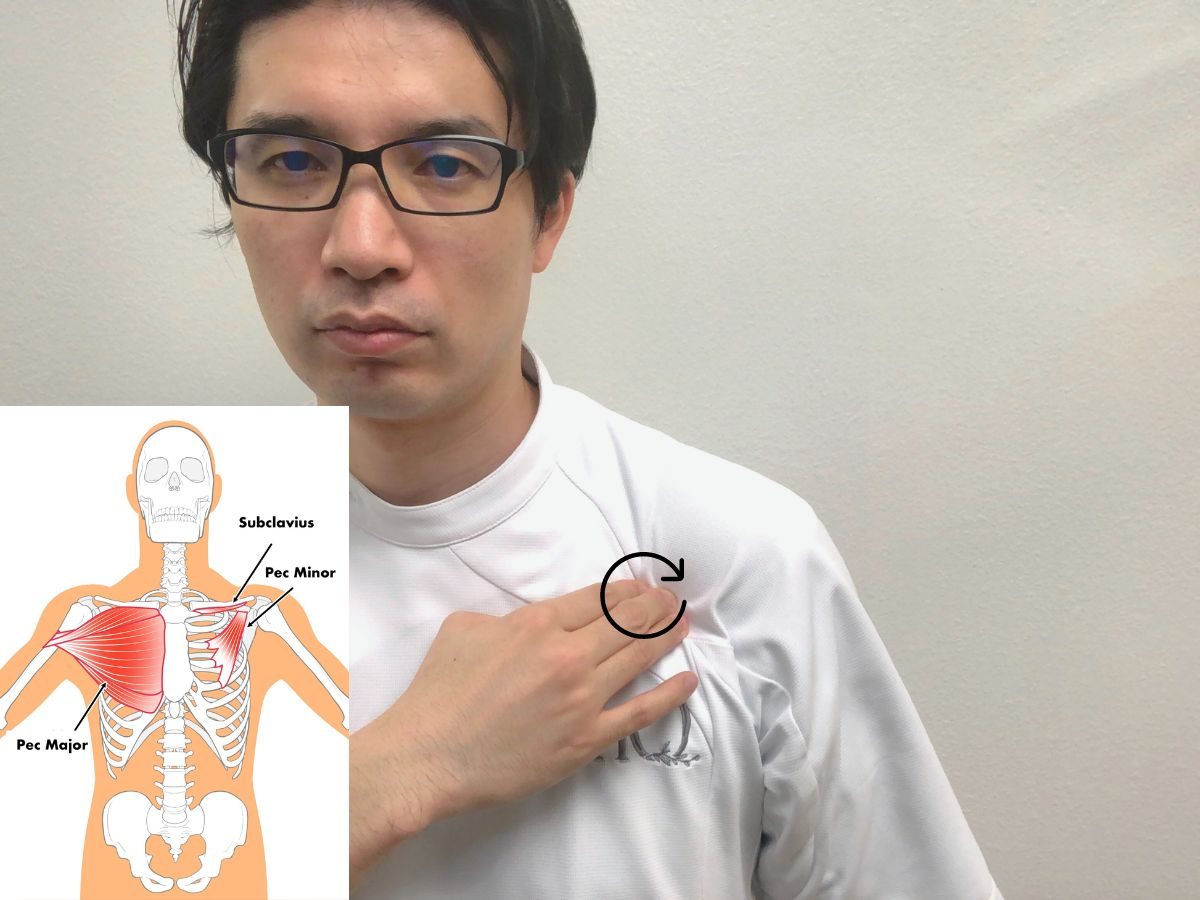
There are trigger points on your upper arm because your biceps, triceps, and coracobrachialis are also attached to the scapula. You need to massage your upper arm. There are 3 spots: inside, middle, and outside of your upper arm.
When you look at the upper arm, you can see the deltoid muscle, which is located on the shoulder. At the junction of the deltoid muscle, there are three spots. The inner spot is situated on the front side, and you can find the depression between the biceps and deltoid muscles. Once you locate the spot, you can start massaging it sideways for a period of 10 seconds.
The middle spot on your upper arm is located at the point where the deltoid muscle is attached. You can easily identify it by touching your shoulder and finding a depression at the center of your upper arm. Once you have located the spot, you can rub it sideways for about 10 seconds.
The outer spot is located at the back of your upper arm, between the triceps and deltoid muscles. If you move your finger from the middle spot outwards, you’ll find another depression at the back of your upper arm. Once you locate it, start rubbing sideways for 10 seconds.
Repeat this cycle two more times.
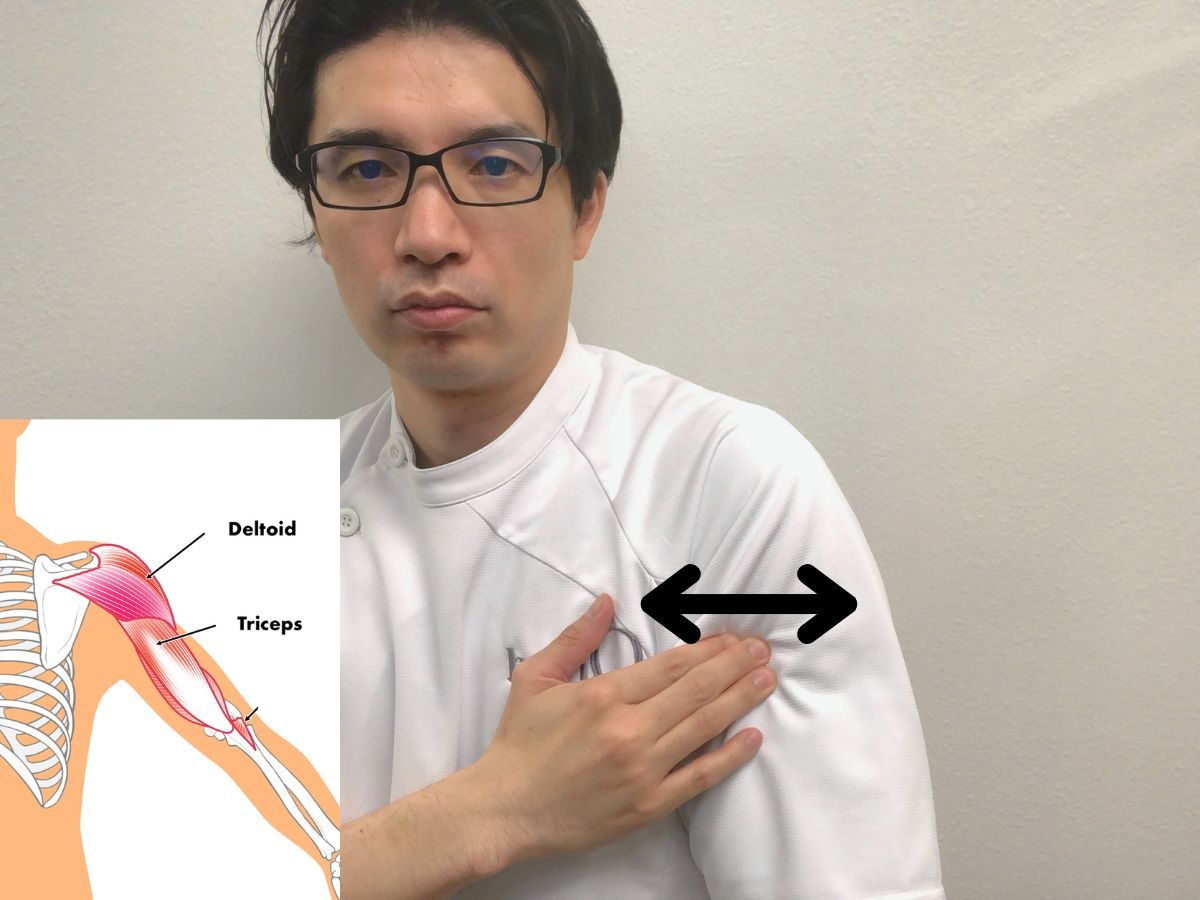
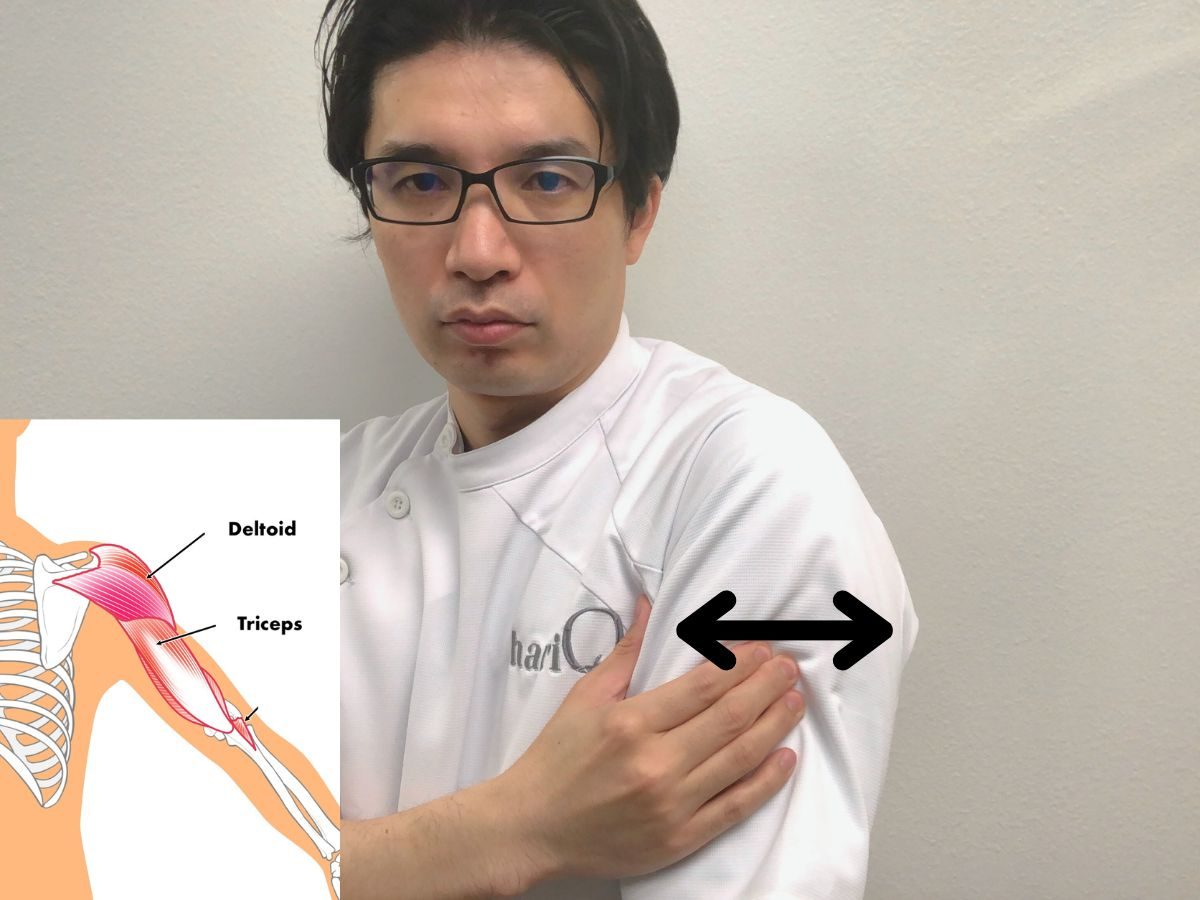
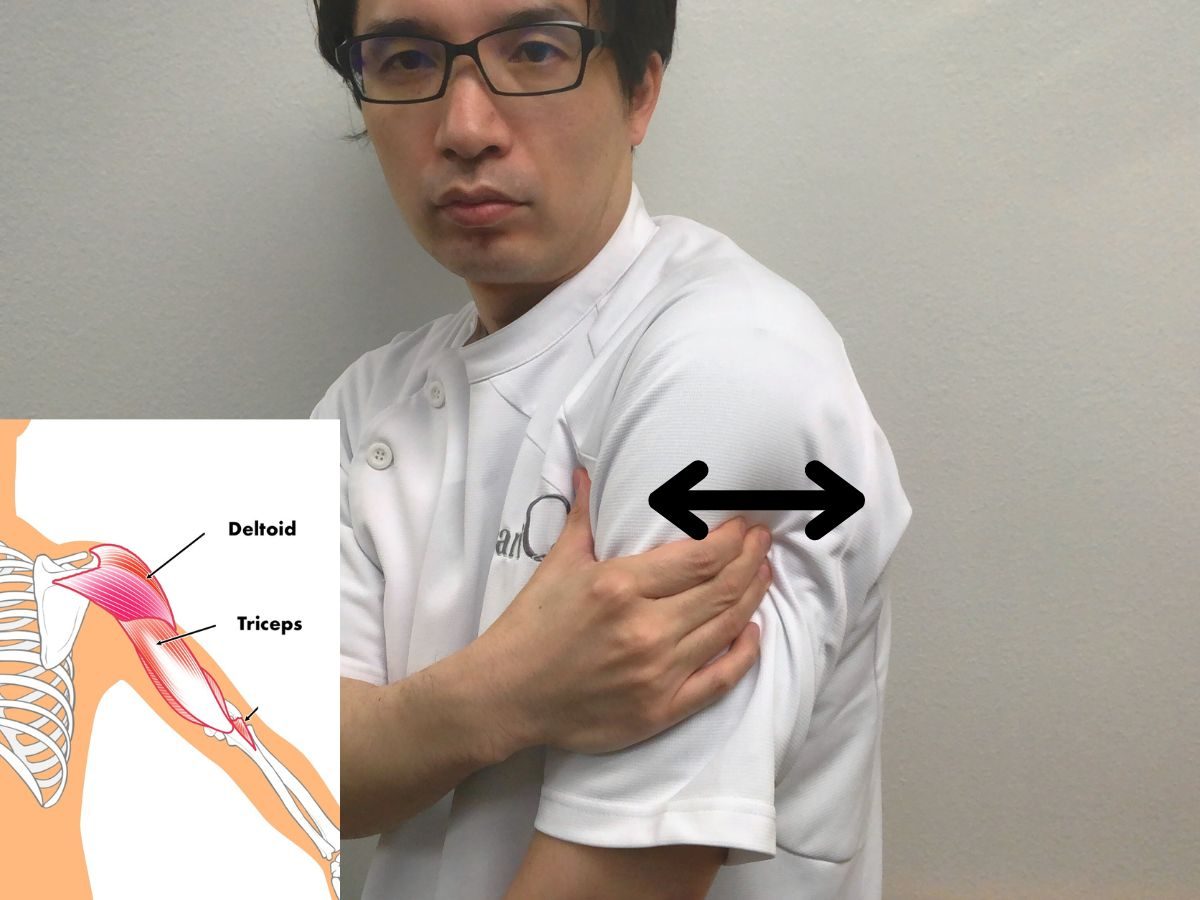
There is the insertion of the biceps muscle at the forearm and most likely you can find the tender/trigger spots there if you have frozen shoulder. And, you need to massage and release the spots beneficial to release the frozen shoudler tightness.
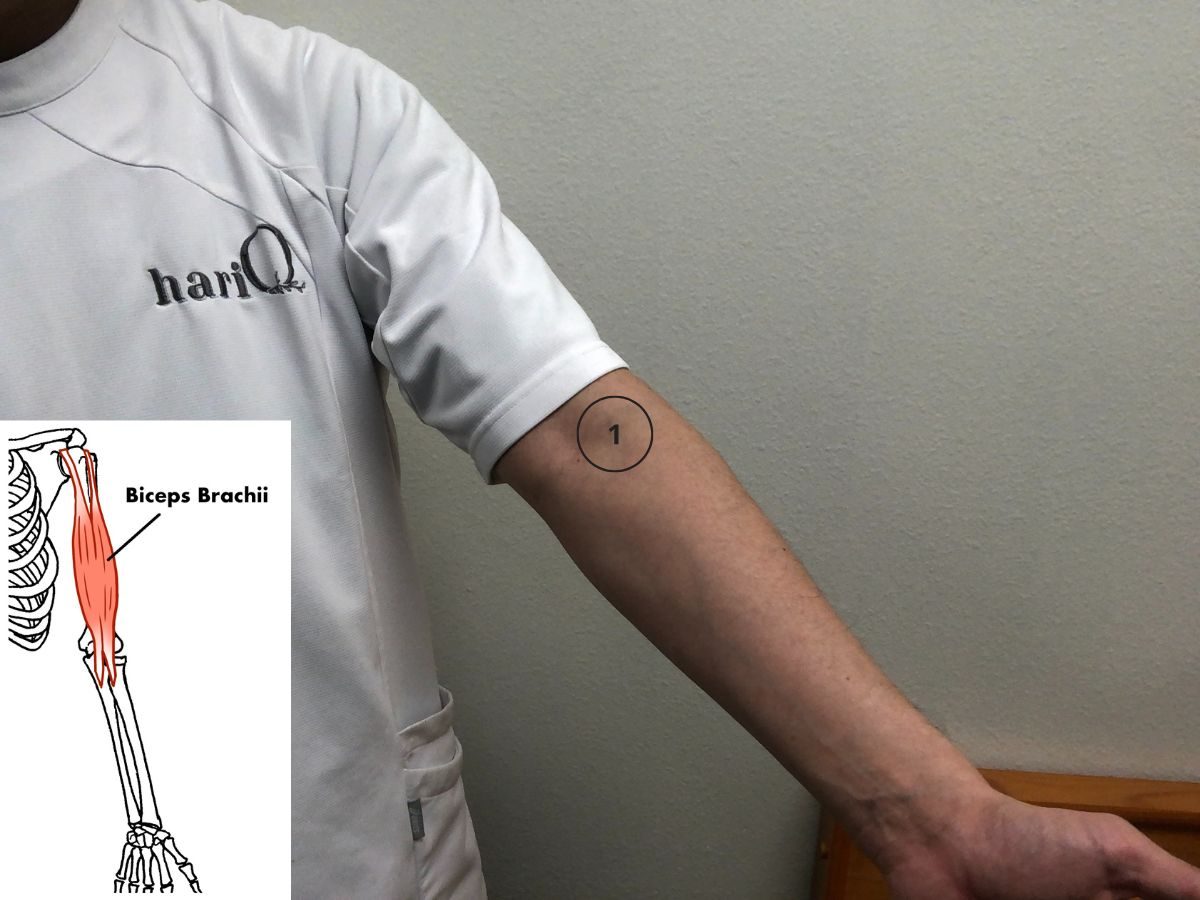
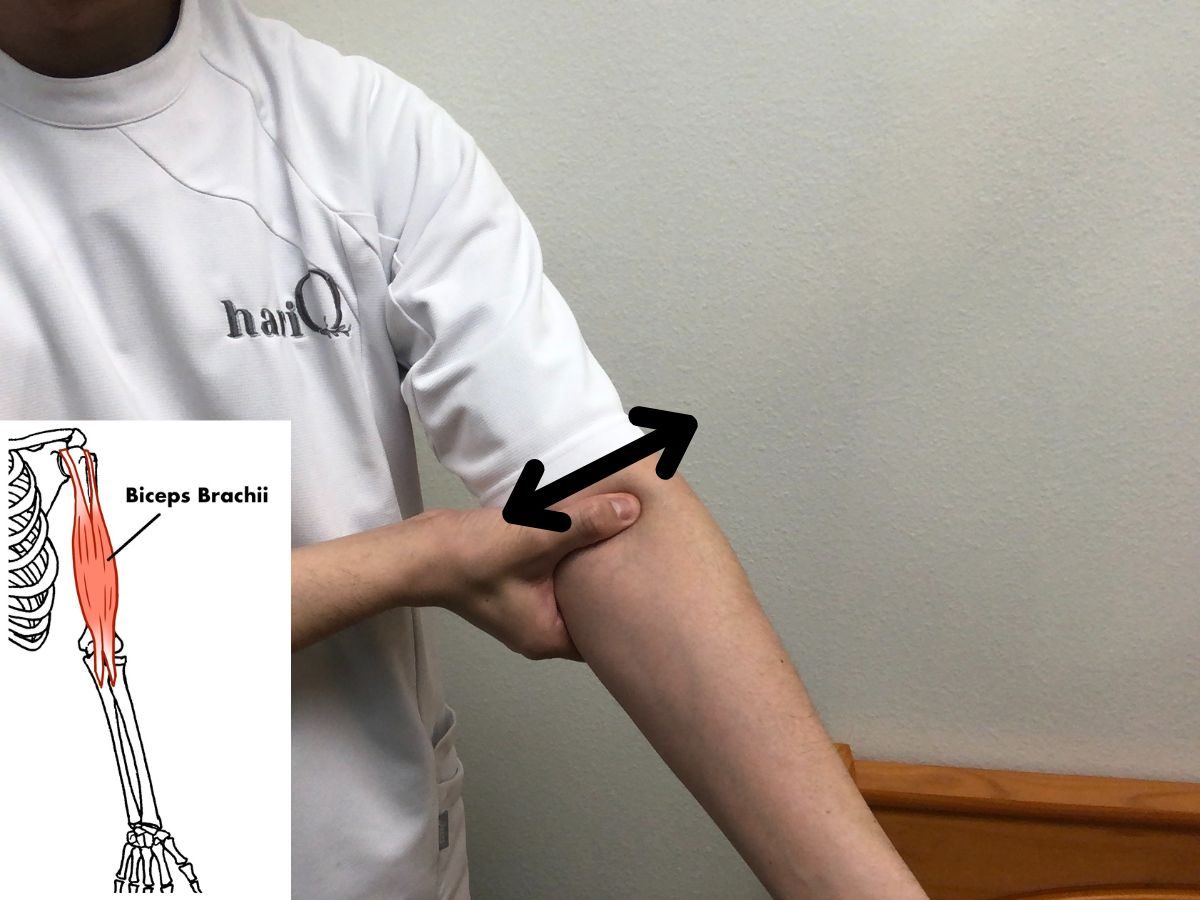
First, locate the elbow crease. At the end of the outer crease, you will find two trigger points. To massage the first one, straighten your forearm and place your thumb at the end of the elbow crease. Massage sideways for 10 seconds. For the second spot, place your thumb between the elbow crease and the elbow bone (also called the lateral epicondyle) and rotate your arm inward. Press and rub sideways for 10 seconds. Repeat this cycle two more times.

In this step, I will introduce you to a beneficial acupressure point called LI4, also known as Goukoku, which is often used by licensed acupuncturists to treat frozen shoulders.
To find the points, you press 4 spots along the 2nd bone. Find the most painful or tender spots in one to four. Once you find it, rub the circular motions for 10 seconds.
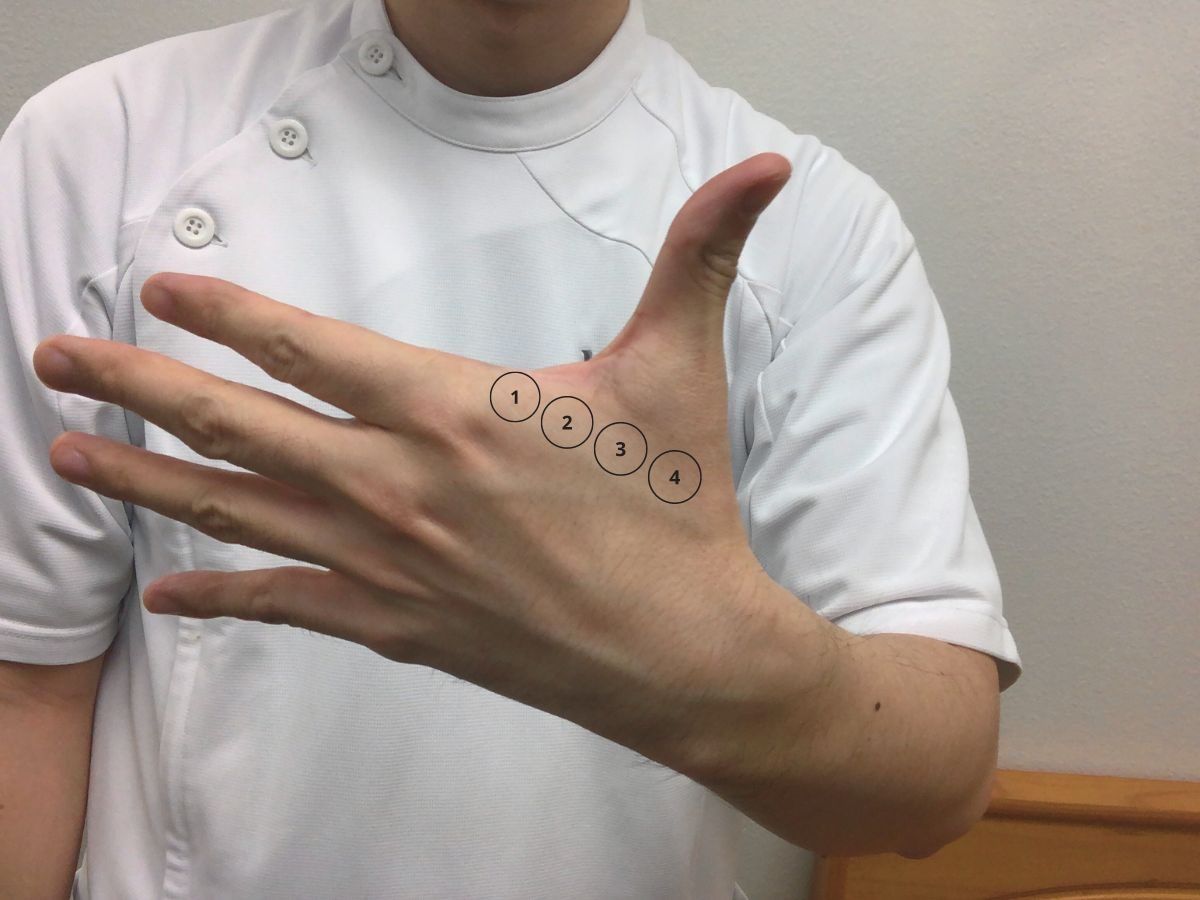
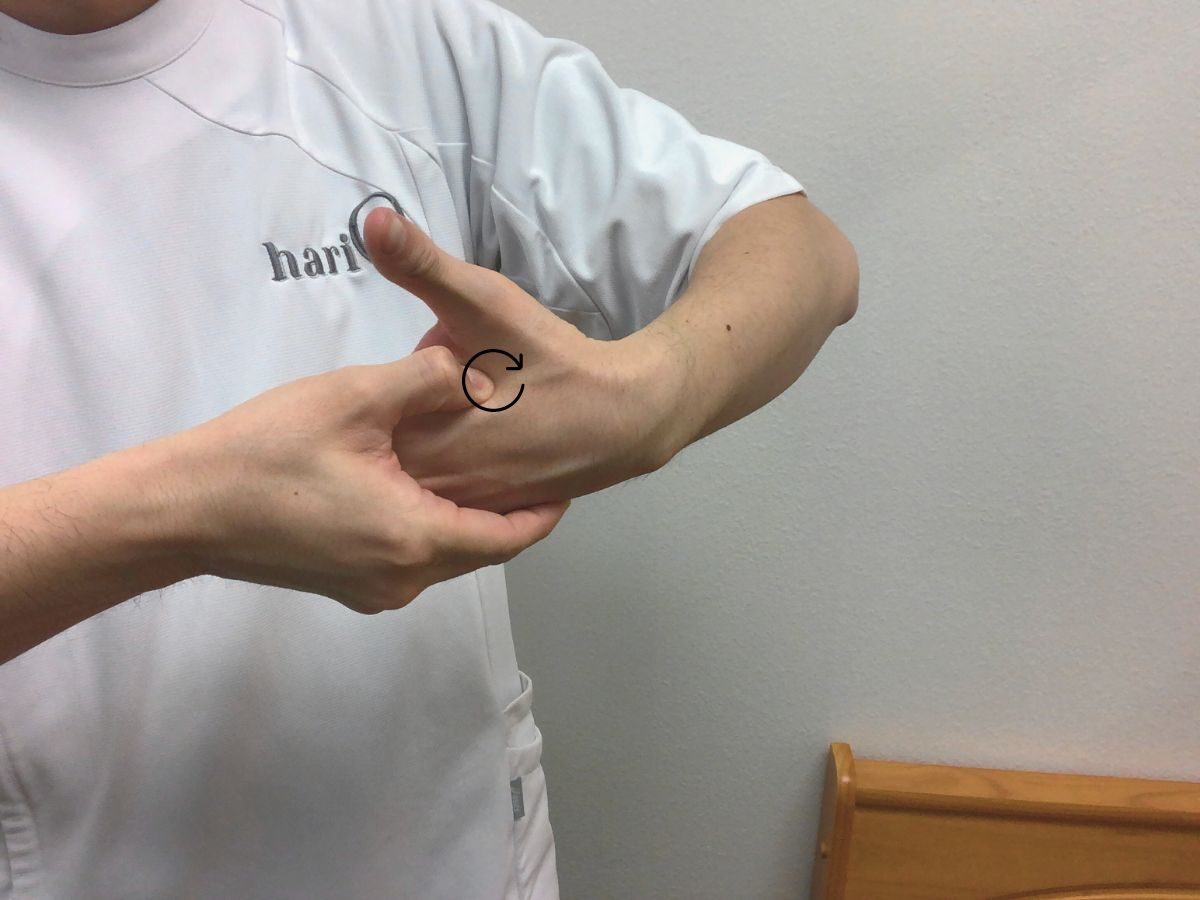
Another acupressure point located on the outside of your hand is called SI3 or Koukei in Japanese. You can find this spot by pressing the edge of the bone and identifying the most painful or tender point. Once you have located it, rub that spot in a circular motion for approximately 10 seconds.
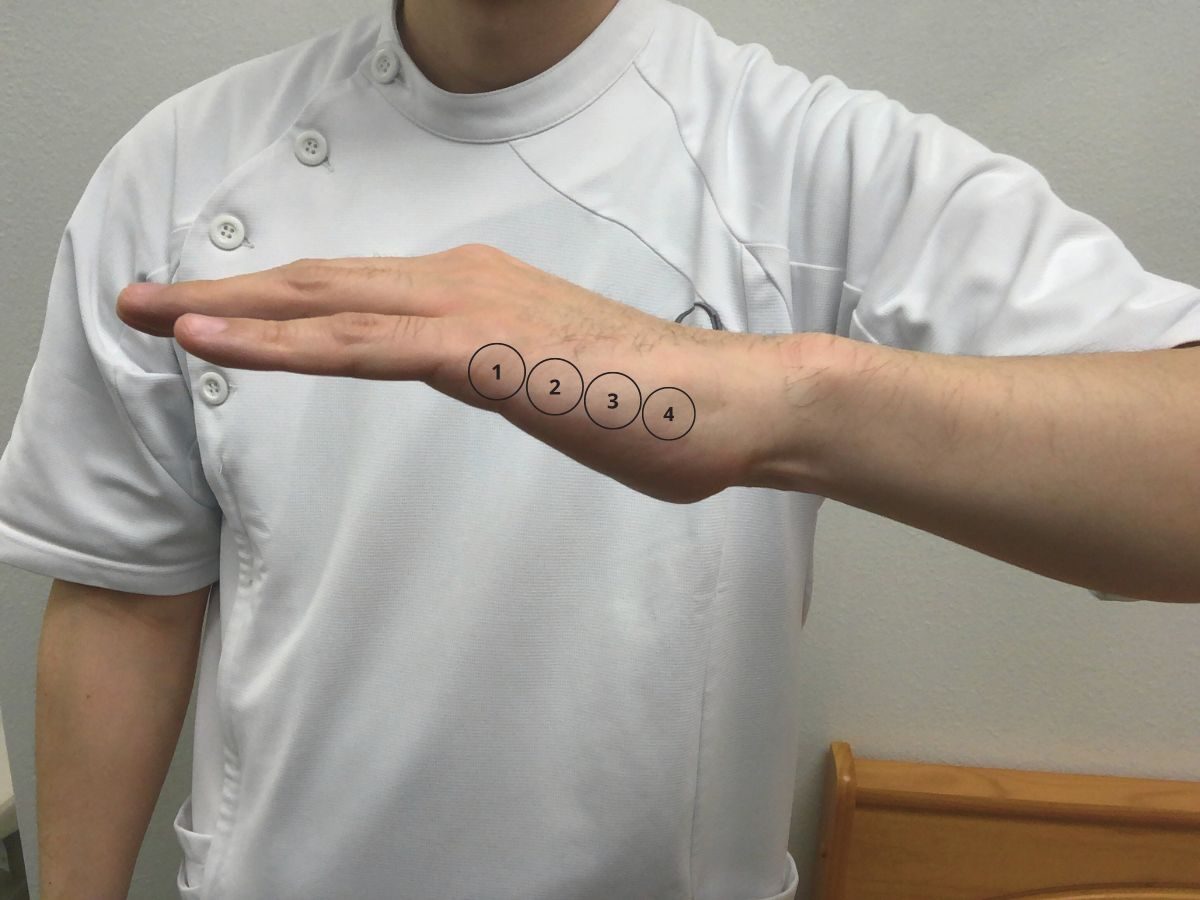
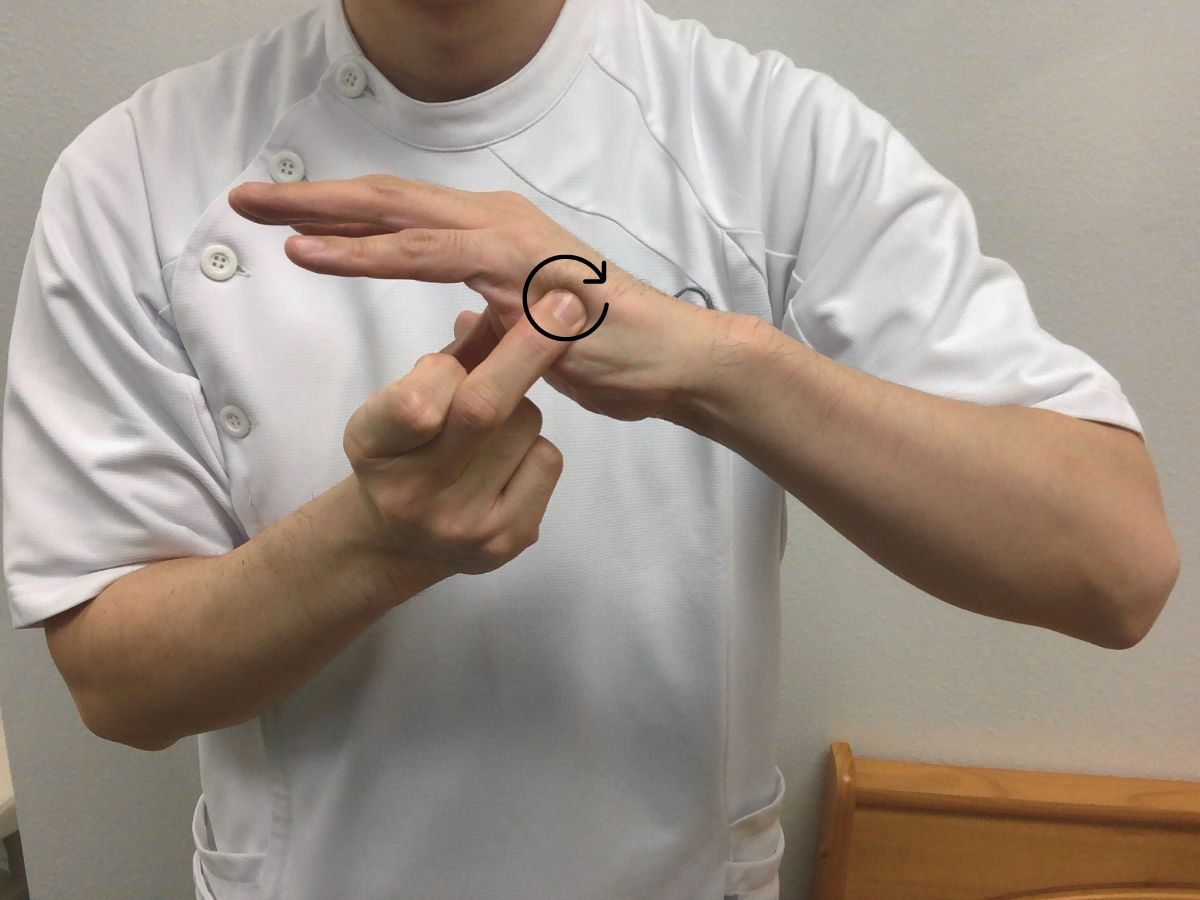
Repeat this cycle two more times.
After you have done these eight steps of frozen shoulder massage exercises, I would recommend you apply a heat pack or heat lamp on your neck and shoulder. The near-Infrared heat lamp is the one I use in my clinic. Near-infrared heat therapy is a type of therapy that uses light to generate heat in the body’s tissues. It involves the use of a device that emits near-infrared light, which penetrates the skin and is absorbed by the body’s cells and tissues. This absorbed light energy is then converted into heat, which can help to increase blood flow, reduce inflammation, and speed up tissue repair.

Applying a heat pack can be beneficial in loosening up the muscles, increasing blood flow, and softening the tissues, which can help improve the range of motion and reduce pain. For example, you can use a heat pack specifically designed for the neck. Additionally, you can place the pack inside your clothes and apply it directly to your shoulder for added relief.
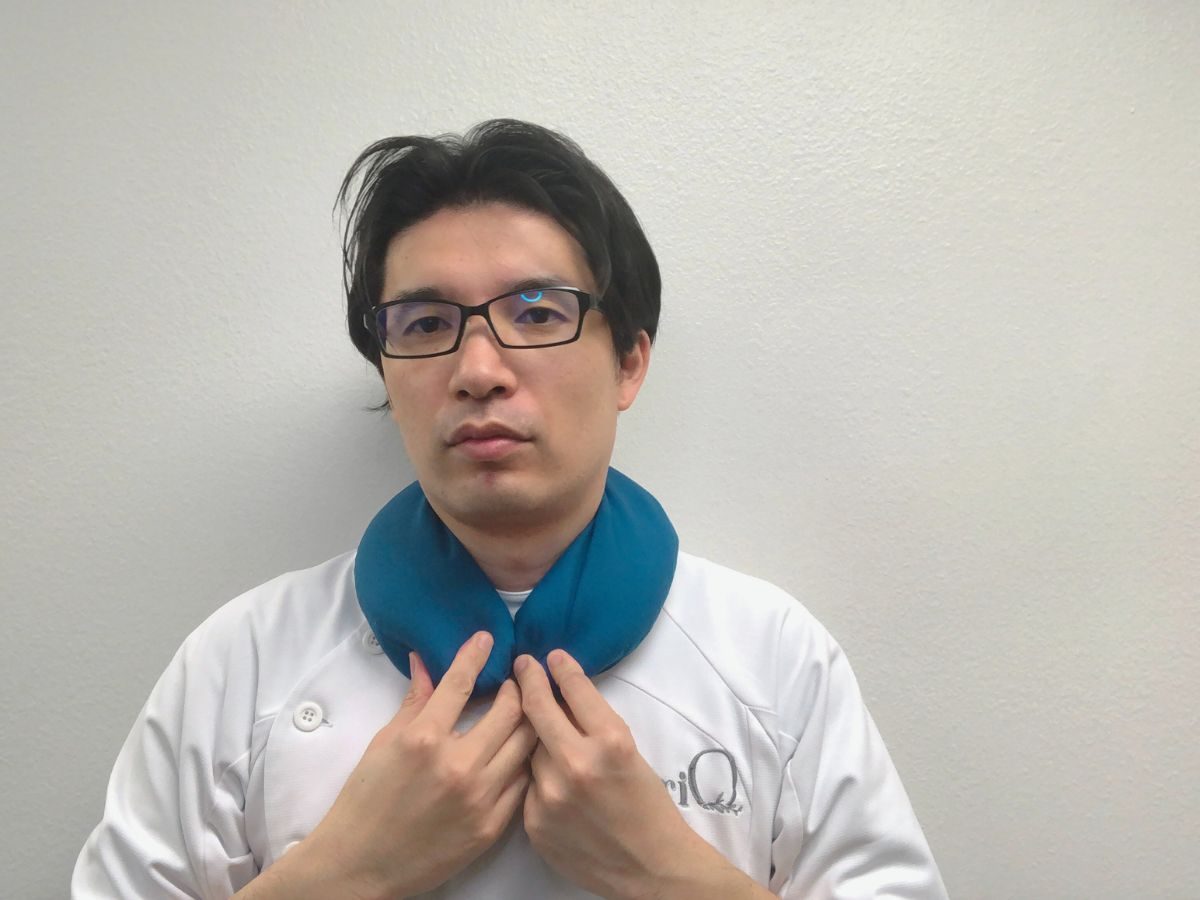
Performing this massage exercise on a regular basis can help speed up your healing process and avoid the need for steroid shots or surgery. But, if you’re still having trouble with your shoulder movement, you might want to consider alternative treatments, like acupuncture, before deciding on painful injections or surgery.
We'll be happy to answer your questions.
Yes. Acupuncture is very effective for frozen shoulders. We examined your shoulder movement and muscle tightness during the initial acupuncture session. You may be unable to bend forward or lean back due to pain. The treatments focused on reducing inflammation and swelling and restoring movement in the shoulder joints. Acupuncture has been shown in many studies to be incredibly practical in reducing pain and inflammation due to its ability to stimulate the body to release its natural painkillers. So, you start feeling relieved from the pain after each session.
Receiving timely treatment is crucial for better outcomes in frozen shoulder cases. Unfortunately, some patients delay seeking treatment for months or even years after the initial onset of symptoms. Such chronic cases are often more complicated and require a longer time to show results. However, despite prolonged treatment, complete recovery is not always guaranteed.
Acupuncture treatment frequency depends on the condition’s duration and severity. Acute and relatively new conditions require more frequent visits, while chronic and long-standing conditions benefit from more widespread treatments. For instance, if you are experiencing a sudden frozen shoulder or shoulder pain, your acupuncturist may recommend 2-3 treatments per week for the best results. However, chronic cases may require only one treatment per week.
If you or a loved one was diagnosed with frozen shoulder and want to learn more about Acupuncture and whether it’s appropriate for your case, send us a message through our contact page. Thank you for taking the time to read this blog post! I appreciate your interest and hope to see you again for future posts.
We understand this can be a lot of information and overwhelming: if you are looking for more support and answers, set up a free consultation with our Frozen Shoulder Specialist, Satoru Ozawa. Share your story, get your questions answered, and learn how you can set yourself up for tremendous success in achieving a healthy life.
The following blogs discuss natural remedies, acupuncture, Chinese medicine, Chinese herbs, and tips for maintaining good health.
I’ll teach you how to make miso soup at home, using a simple fast method that anyone can do. I’ll also explain why miso is more than...
I’d like to share some simple self-stretching techniques for chronic lower back pain, one of the most common and frustrating issues affecting people of all ages, from...
I would like to share with you what you can do with 5 TIPS and how to manage one of the most annoying conditions: tinnitus or ringing...

Satoru Ozawa, L.Ac, ATC
hariQ acupuncture & herbs
Licensed acupuncturist, Certified Athletic Trainer and Chinese herbal specialist. With his 10 years of experience in Oriental Medicine, he will recommend the best natural Remedies, including Acupuncture, Chinese herbs, and health tips to relieve your suffering.
3 comments